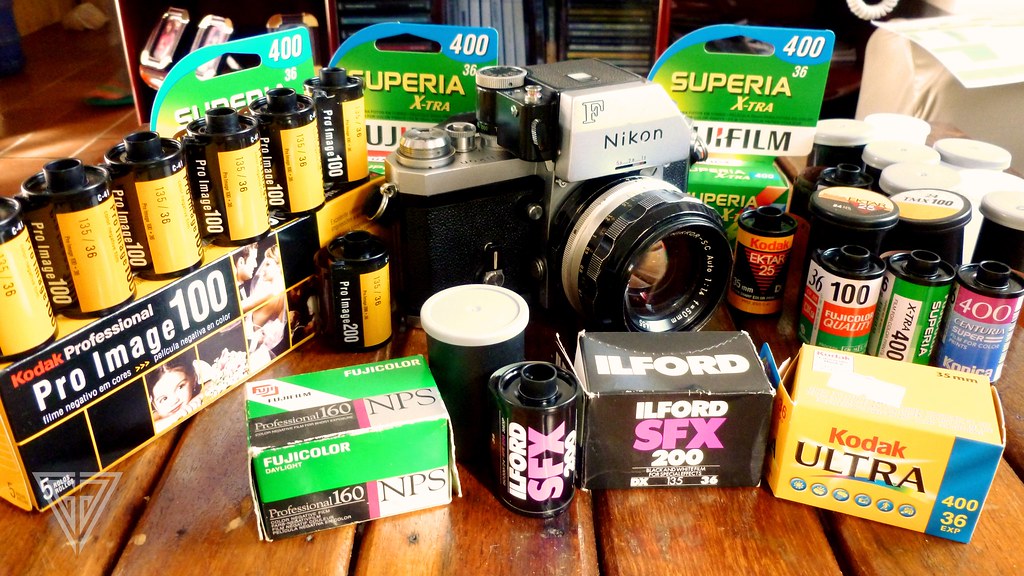35mm Film

Photo by GIULIANO GIANELLI. Licensed under CC BY 2.0
Since the 1960s, 35mm film has been the most popular film size. While the quality of 35mm film cannot match that of larger film sizes, the ease of use and flexibility it offers is unmatched. As a result, a large majority of film cameras, including single-lens reflex (SLR) cameras, support the 35mm film size. And because 35mm film has the most support in the photography industry, is available at most retail outlets, and is typically much lower in price than the larger size film equipment, 35mm film is often the starting point for beginner photographers.
Why is it Called 35mm Film?
35mm film is known as such because the width of the film is 35 millimeters (mm). Running along both sides of 35mm film are perforations that have been standardized to a Kodak Standard pitch – KS-1870. With this standardization, cameras advance each frame by 8 perforations, or approximately 38 millimeters, to create perfectly spaced images that do not overlap. The image size of each image on film is 24×36 millimeters, with a 2 millimeter gap between each frame.
35mm film typically comes in 24 or 36 exposure rolls. Individual rolls are enclosed in a light-tight metal container, allowing film cameras to be loaded in the daylight without risking exposure. Inside the metal container the film is wrapped around a spool, allowing the film to advance frame to frame. The film is clipped or taped to the spool and the other end exits a slot lined with small fiber particles (called flock) that ensure the film can exit the container without risking exposure from light. A cut piece of the film, known as the leader, is manufactured to stick out of the container and facilitates loading the film in a camera. For assistance with loading film into your camera, please see loading and unloading 35mm film.
Printing with 35mm Film
Because of the smaller size of 35mm film, photographers are somewhat limited in the quality of print that can be achieved. Depending on the subject, film speed, lighting, and other factors, 35mm film can be enlarged up to 16×20 inches. Please note that 35mm film can be enlarged as much as you would like but most prints larger than 16×20 will show noticeable grain and suffer from a lower quality look. However, the personal preference or desired look the photographer wishes to achieve will play a role in how large the image can be printed. Some photographers using 35mm film may not go beyond a 5×7 print, while others may try to push beyond the 16×20 size.
Photographers looking to make large sized prints will likely want to move up to a medium format or large format camera, which use negatives much larger than 35mm and allow for bigger prints.
More information on 35mm film can be found at:
35mm Film Cameras
Setting 35mm Film with 35mm Cameras
Brief Comparison of 35mm film, medium format film, and large format film
















